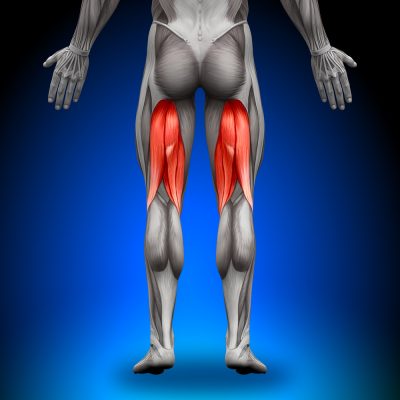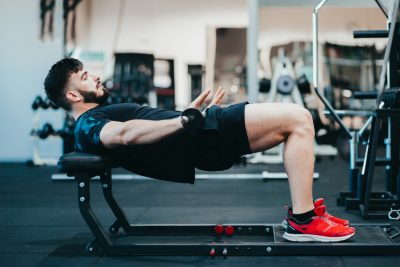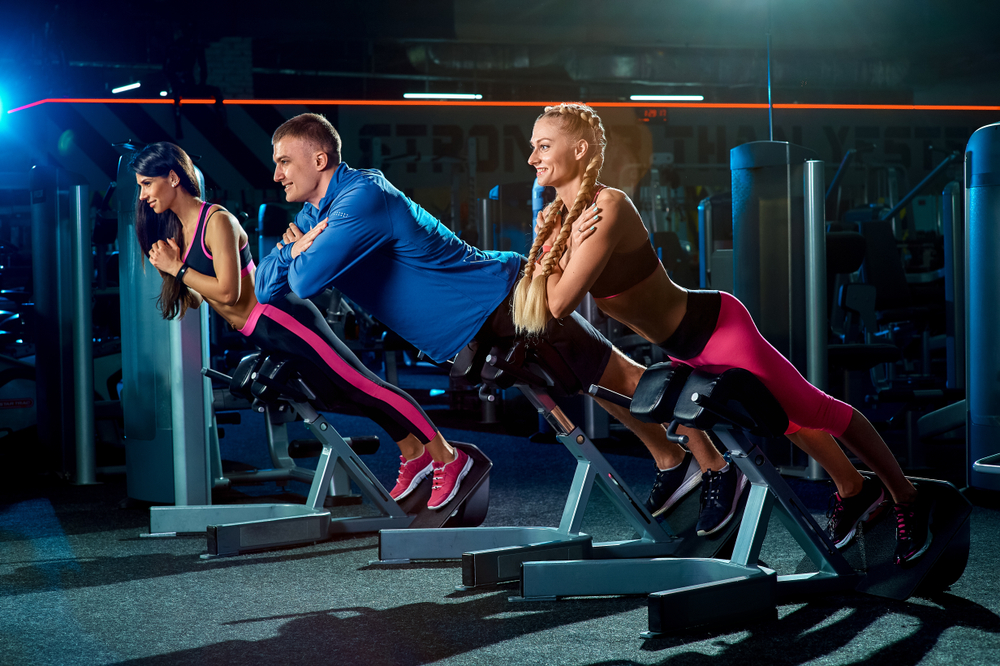Reverse Hyperextension
The reverse hyperextension is a type of workout routine that can be performed on a machine, glute-ham developer, and even on a bench. It is beneficial when it comes to the development of some parts of the body. This workout routine is essential for individuals who wish to develop their hamstrings and glute. It is vital that an athlete who performs power and strength activities perform this workout routine to ensure that they are suitably fit and in proper form.
How to Perform the Reverse Hyperextension
Below is a guide on how to properly perform the reverse hyperextension workout routine. To start with, maintain a prone form either on the bench, glute ham developer or even the hyperextension machine. Your hips would be placed at the bottom of the pads while keeping the lower part of your back well relaxed. Ensure that your legs are adequately stretched out, and your abs are tightened to limit the excessive extension of your lumbar. Ensure that your chest is placed on a forward position unto the pad then let your hamstrings stretch out while positioning your legs towards the ground. Next, you raise your legs using your gluteal muscles and even your hamstrings. Put small work on the upper part of your torso while performing this workout routine. By using the upper part of your chest, the lower part of your back would also be worked on. While your legs are moving with you controlling them, ensure that you make use of the momentum for the movement. After doing this, gradually return the load to the original position and repeat this procedure for at least ten to fifteen reps to get the best results. You must be consistent while performing this workout routine to get excellent results in return.
Muscles Work
There are few muscles which are the particular targets of the reverse hyperextension. These muscles include:
Hamstrings
Your hamstrings are very active while you perform this workout routine because it aids in extending your hips underneath the load of the machine. While performing this workout routine, the individual ought to eliminate the need to use the knee for the workout but rather the hamstrings.
Gluteals
The reverse hyperextension is well-known for working on the gluteal. During this workout routine, the gluteal are super active and aid in extending your hips to lift the load and even your leg off the ground. This exercise is superb for individuals who wish to strengthen and develop their glutes.
Spinal Erectors
Your spinal erectors work immensely in maintaining balance with the lifter during this workout routine. You make use of your spinal erectors to balance your pelvis and engage your glutes to raise and balance the load.
The benefit of the Reverse Hyperextension
There are numerous benefits attached to performing the reverse hyperextension properly. These benefits include:
Stronger Glutes and Hamstrings
There are numerous types of exercises that enable you to work on your glutes and hamstrings. However, these exercises tend to work on these parts of your body individually instead of together. There are few exercises that can do on both your hamstring and gluteal together of which the reverse hyperextension is inclusive. This exercise properly develops and strengthens your gluteal and hamstrings without having to place too much strain and cause injury on the lower part of your back.
Better Hip Extension
The performance of reverse hyperextension is a superb way of developing better hip extensions. Having a well-developed hip extension would enable you to perform workouts squatting, deadlifts, jumping, running, and various other types of athletic performance with ease. In case an athlete cannot perform a basic hinging of the hips, the version of the reverse hyperextension can probe them to be able to complete a hip hinge.
Injury Prevention for Lower Back
The proper performance of the reverse hyperextension reduces the possibility of one sustaining an injury in the lower part of the back. Although there is a slight strain on the lower part of the end during this workout routine, it, however, does not strain the back up to the point of sustaining an injury. Individuals who engage in workout routines like deadlifts, squats, snatches, and even running ought to perform the reverse hyperextension regularly to prevent the sustenance of an injury—at the same time, developing and strengthening the gluteal muscles, the reverse hyperextension aids in the proper movement of athletes and even essential individuals.
How to Program the Reverse Hyperextension.
There are particular ways to program the reverse hyperextension to get the best results. The following are recommendations on how to perform the reverse hyperextension.
Movement Integrity-Reps, Set, and Weight Recommendations
This workout routine should be performed using a light or medium-sized weight to allow for repetitions developing coordination and stability.
- Three to four sets of eight to ten repetitions using a light or medium-sized weight at a neutral speed and observing a resting period when required.
Muscle Hypertrophy-Reps, Sets, and Weight Recommendations
If your plan is simply muscle hypertrophy, it is highly suggested that you perform two to three sets of twelve to fifteen repetitions while making use of an average-sized weight. You must observe two to three sets of twelve to fifteen repetitions with a medium-sized matter while observing a resting period of about forty-five to ninety seconds.
Strength-Reps, Sets, and Weight Recommendation
If an individual wishes to develop him or herself in terms of strength and stability, it is advised that they make use of heavyweight but in a controlled repetition process. To get the best out of this workout routine, perform three to four sets of eight to ten repetitions while making use of a heavy load, and resting when it is required.
Muscle Endurance-Reps, Sets, and Weight Recommendations
Although this is not the most known exercise used for training the muscles, some individuals can perform this workout routine repeatedly and get excellent results. This helps in muscle hypertrophy and the reduction of pain in the lower part of the back. Perform this workout routine for two to four sets of fifteen to twenty repetitions using a medium-sized weight and observing a resting period for about thirty to forty-five seconds.
Reverse Hyperextension Variations
There are some particular variations when it comes to the performance of the reverse hyperextension. The various types of variations for the reverse hyperextension include:
Tempo Reverse Hyperextension
This is an excellent variation of the reverse hyperextension. It aids in the proper development of the gluteal muscles and the hamstrings. It is essential for balancing the physique of the body and lifting loads of any exercise much more straightforward.
Banded Reverse Hyperextension
This particular workout routine entails the use of resistance bands to increase your level of muscle engagement. It is superb when it comes to the development and strengthening of your hamstrings and gluteal.
Reverse Hyperextension Isometric Holds
The performance of the reverse hyperextension isometric hold is a great workout routine that aims at increasing the level of your muscle activity. By performing this workout routine, an individual works on the torso, hamstrings, and gluteal muscles.
Reverse Hyperextension Alternatives
There are few workout routines which could be done in place of the reverse hyperextension. These workout routines are just as effective and efficient as the reverse hyperextension. They also aid in the proper development and strengthening of the glute and hamstrings. They also help in the prevention of injuries to the lower part of the back.
Goodmorning
The good morning exercise is known to be a great workout routine that makes use of a barbell for performance. This exercise majorly has effects on the lower part of your back, glutes, and even your hamstrings. This makes it a great workout routine for individuals who wish to develop the strength of their hips and back correctly. The difference between this exercise and the reverse hyperextension is that the good morning workout routine aims at developing the lower part of the end and the spinal erectors.
Glute Ham Raise
This is another excellent workout routine that aims at increasing muscle hypertrophy, strength, and even stability. It is very similar to the reverse hyperextension when it comes to the benefits it offers. The difference between this workout routine and the reverse hyperextension is that this particular workout routine aims at working on the lower part of your back and the spinal erectors.
Hip Thrusts
This is another fantastic workout routine that aims at the proper development of your glutes.it is very similar to the reverse hyperextensions because it aids in developing and strengthening the muscles of your gluteal.
How to Perform the Reverse Hyperextension Using a Stability Ball
It is not every individual that might own a reverse hyperextension machine. For those who do not own this machine, you can make use of a stability ball to perform this exercise. To achieve this workout routine, begin by lying on your stability ball with your hands on the ground while holding an object which cannot be moved. Ensure that the ball is placed underneath your hips and even your abdomen. While maintaining a still body, raise your legs upwards till your body is completely stretched out. Gradually return to your original position then repeat this procedure for as much as you can to get the best results.
Conclusion
Reverse hyperextension is a superb workout that is very useful in the development and strengthening of the hamstrings and gluteal muscles. You must perform this workout routine consistently and correctly to get the best results.



